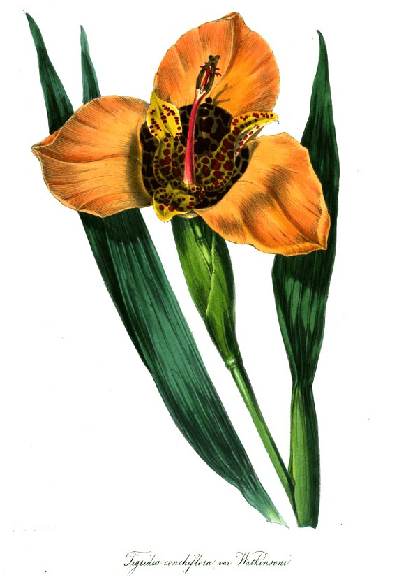Who Were The Artisan Naturalists?
The Artisan Naturalists were a Victorian group of ‘humble origin’ skilled craftsmen who took very long walks in the green areas behind what is now Bury New Road, including on Kersal Moor, Prestwich Clough and around Agecroft. They were amateur, self-taught botanists, or ‘naturalists’ who collected plants, identified them and catalogued them.
John Horsefield (1792-1854) was an independent handloom weaver, who was free from the routine of the rapidly expanding factory system and could thus indulge his self-taught amateur botany enthusiasm. In 1820 he founded the Prestwich Botanical Society, which held meetings in local pubs where plant specimens could be brought and identified. It had around twenty members who paid a monthly subscription of sixpence. The money was used to buy botany and science books, and 131 such tomes were bought for the Society over the following 32 years that Horsefield was president.
“[W]e instruct one another by continually meeting together; so that the knowledge of one becomes the knowledge of all, and we make up for the deficiency of education by constant application to the subject”, Horsefield wrote.

Throughout his botany adventures, Horsefield remained a poverty stricken gingham weaver. The only money he ever made from botany was by selling for £10 a new hybrid lily – Tigridia Conchiflora Watkinsoni– that he had created in his garden to a gardener called Watson who subsequently registered the plant with the RHS in his own name. Horsefield also created the Narcissus Bicolor Horsefieldii dwarf daffodil, which was recently planted around his grave in St Mary’s Churchyard by the Prestwich Heritage Society. His tomb is Grade II listed by English Heritage and reads…
‘Ye who behold God’s works in Nature’s ways
And find in flowers mute anthems to His praise
Who read the volume of eternal love
In seeds of earth as in the stars above
Here read a name whose fame shall long endure.
One of poor birth, but Gifted although poor:
God – unlike man – the humblest spirit lifts
Nor asks his wealth before He sends His gifts!
Where’er Botanic science could be learn’d
New links disclosed – new species yet discerned
Where’er by wood or lane or heath or hill
God op’ed the book that taught Botanic skill
There HORSEFIELD’s foot from dawn to eve was seen
to learn – to teach – to be what he has been,
An honour to the soil that gave him birth:
Oh, may that spirit for whose loss we grieve
Our God accept – our Saviour Lord receive…’



Horsefield met fellow Artisan Naturalist, Richard Buxton, in 1826, when they bumped into each other on Kersal Moor during one of their botany expeditions. Buxton, who then joined the Prestwich Botanical Society, later wrote that Horsefield was “an excellent scientific botanist”. Meanwhile, famous Chartist, Samuel Bamford. wrote Lines On The Death of the Late John Horsefield, Botanist of Prestwich…
‘Another of the humble great departs,
And sadness clouds the light of many hearts;
Those of his house, who held him truly dear,
Indulge in deep regret, and bitter tear;
Whilst the companions of his leisure day
Sigh, when they find that Horsefield is away:—
The office vacant he so often bore—*
His words of thoughtful teaching heard no more.
No more he seeks the fern within the dell,
Nor humid moss that drips beside the well;
Nor pimpernel,** that weather warns the poor;
Nor golden asphodel, that gems the moor;
Nor purple heath, that scents the breezy wild;
Nor hyacinth, of shady nooks the child;
Nor sun-dew, glittering on the moorland dun,
Nor primrose coyly nestling to the sun.
He cares not for the choicest herb that grows,
Since life hath failed and he takes repose.
Thou’st journey’d long—the storm is on the plain;
Come weary one, and rest, and live again…’
Richard Buxton (1786-1865) was a shoemaker, born at Sedgley Hall Farm, who lived in poverty throughout his life but taught himself reading and botany. In 1826 he was ‘botanising on Kersal Moor when he met John Horsefield and joined the Prestwich Botanical Society. In 1849, age 62, he published the classic plant book, A Botanical Guide to the Flowering Plants, Ferns, Mosses and Algæ, Found Indigenous Within Sixteen Miles of Manchester, which catalogued plants found in the area…***


Richard Buxton is buried in St Mary’s Churchyard.

James Percival (1827-1902) was born in Hope Square at the front of what is now the Friendship Inn and took over the lead of the Prestwich Botanical Society after John Horsefield, and later the Lancashire Botanical Society. He was a mechanic who became wealthy making gadgets for the local mills but continued his lifelong calling in botany, probably inspired by James Percival Senior, his grandfather who was also a gardener.
James Percival is buried at St Mary’s Churchyard and his grave bears the eulogy; ‘He had no favourite flower, but loved them all.’

There were lots more amateur botanists associated with the Prestwich Botanical Society but not much is known about them. However, John Percy, in his essay for the Manchester Regional History Review in 1991 wrote that “Most of our knowledge of the once rich floras of the surrounding mosses and moorlands comes from men like these…The most remarkable achievement in terms of publication was that of the shoemaker, Richard Buxton, whose two editions of a botanical guide to the Manchester area appeared in 1849 and 1859. Buxton was unable to read until he was sixteen…”
See also:
The Artisan Naturalists of Bury New Road – click here
What Were The Achievements of The Artisan Naturalists? Robert Trueblood explains all – click here.
***Read Kersal Moor Extracts from Richard Buxton’s A Botanical Guide to the Flowering Plants, Ferns, Mosses and Algæ, Found Indigenous Within Sixteen Miles of Manchester – click here











